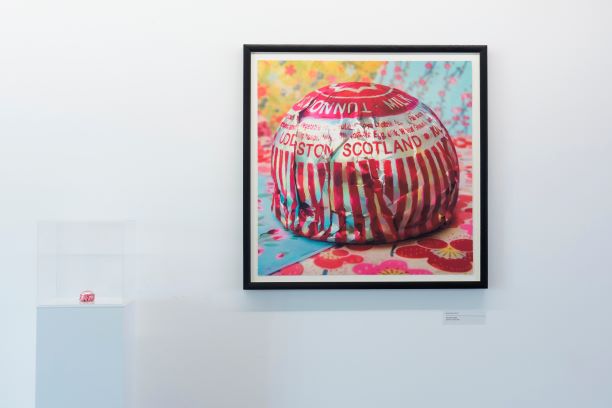Welcome to our new regular blog slot, the ‘Friday Art Blog’. We look forward to your continued company over the next weeks and months.
You can return to the Art Collection website here, and search our entire permanent collection here.
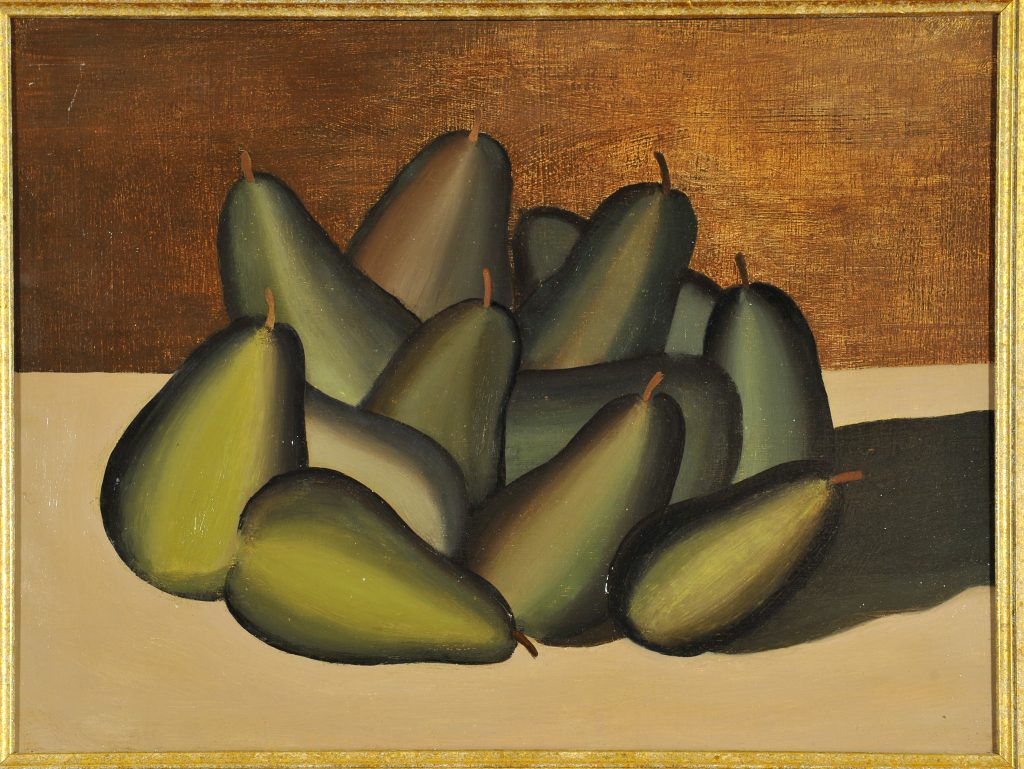
(Oil on board, 1973)
This week we are taking a look at some of the still life works of art in the permanent collection.
‘Still life’ (or ‘nature morte’ as it is also widely known) refers to the depiction of mostly inanimate subject matter. It has been a part of art from the very earliest days, from thousands of years ago in Ancient Egypt, found also on the walls in 1st century Pompeii, and featured in illuminated medieval manuscripts. During the Renaissance, when it began to gain recognition as a genre in its own right, it was adapted for religious purposes. Dutch golden age artists in particular, in the early 17th century, depicted objects which had a symbolic significance. The still life became a moralising meditation on the brevity of life. and the vanity of the acquisition of possessions. But, with urbanization and the rise of a middle class with money to spend, it also became fashionable simply as a celebration of those possessions – in paintings of rare flowers or sumptuous food-laden table tops with expensive silverware and the best china.
The still life has remained a popular feature through many modern art movements. Artists might use it as an exercise in technique (much cheaper than a live model), as a study in colour, form, or light and shade, or as a meditation in order to express a deeper mood. Or indeed all of these.
The works collected by the University of Stirling Art Collection over the past fifty years reflect its continuing popularity amongst artists and art connoisseurs alike.
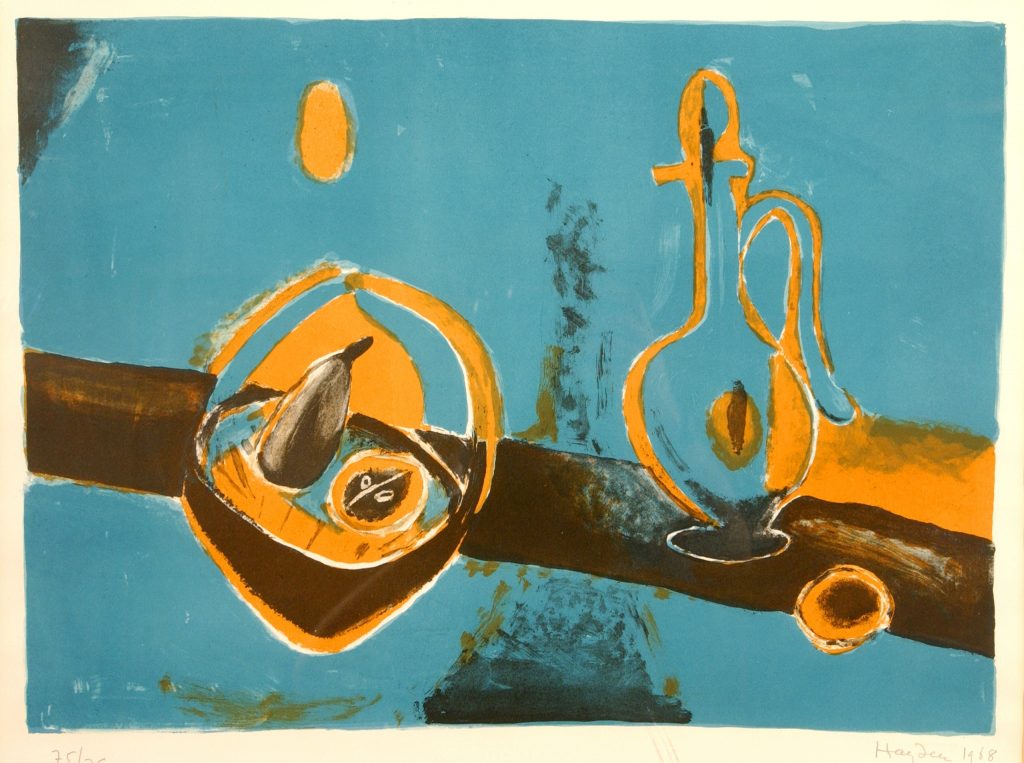
(Lilthograph, 75/75, 1968)
In the modern era the still life featured in the post impressionist art of Van Gogh, Cezanne and Picasso. Henri Hayden trained in Warsaw, but moved to Paris in 1907 where Cezanne and Cubism were influences. From 1922 he rejected this aesthetic and developed a more figurative manner, but later in life there were signs of a return to a sub-cubist mannerism in his work, and as a result the landscapes and still lifes of his last 20 years became both more simplified and more definitely composed than the previous period, with an elegant calligraphy. They combine a new richness of colour with lyrical melancholy. Meditation and purity of vision mark the painter’s last years.

(Gouache, 1951)
Anne Redpath is best known for her still lifes and interiors, often with added textural interest, and also with the slightly forward-tilted table top, of which this painting is a good example. Although this work is largely monochrome it retains the fascination the artist had in fabric and textiles – the depiction of the lace is enhanced by the restrained palette.

(Linocut, 1/5, 1974)
While Euan Heng’s work is contemporary in practice his imagery is not always contemporary in origin. He has long been influenced by Italian iconography, medieval paintings and frescoes.

(Lithograph, 30/70, 1967)
In Ceri Richards’ work there is a constant recurrence of visual symbols and motifs always associated with the mythic cycles of nature and life. These symbols include rock formations, plant forms, sun, moon and seed-pods, leaf and flower. These themes refer to the cycle of human life and its transience within the landscape of earth.

(Oil on canvas, 1963)
This is a typical example of one of Elizabeth Blackadder’s ‘flattened’ still life paintings, with no perspective. Works such as this retain the form of the table, with the top raised to give the fullest view.

(Oil on canvas , 1975)
David Donaldson was well known for his still lifes and landscape paintings as well as literary, biblical and allegorical subjects.
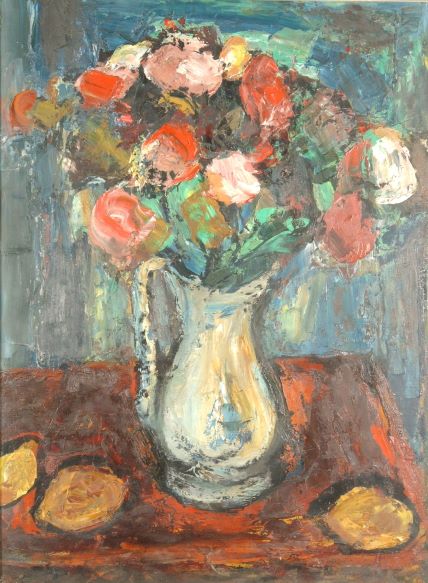
Oil on board, 1954
William MacTaggart typically painted landscapes, seascapes and still lifes featuring vases of flowers. These flowers, for his wife, Fanny Aavatsmark, are unusual for not being poppies, his most commonly painted flower.
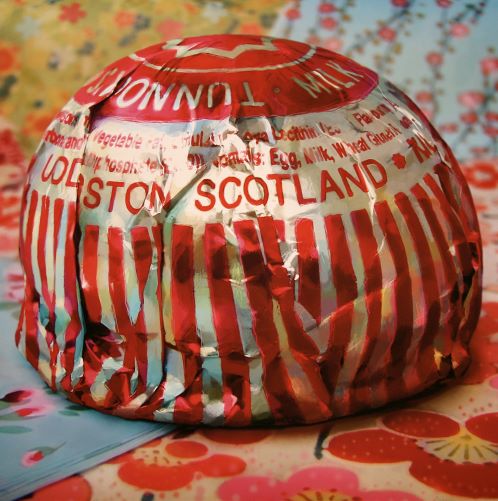
(Digital print, 18/25, 2009)
We end this blog post with one of the most popular still lifes in the collection. This depiction of Scottish classic the Tunnock’s teacake is a modern take on the still life. It is a firm favourite whenever it is on display.
